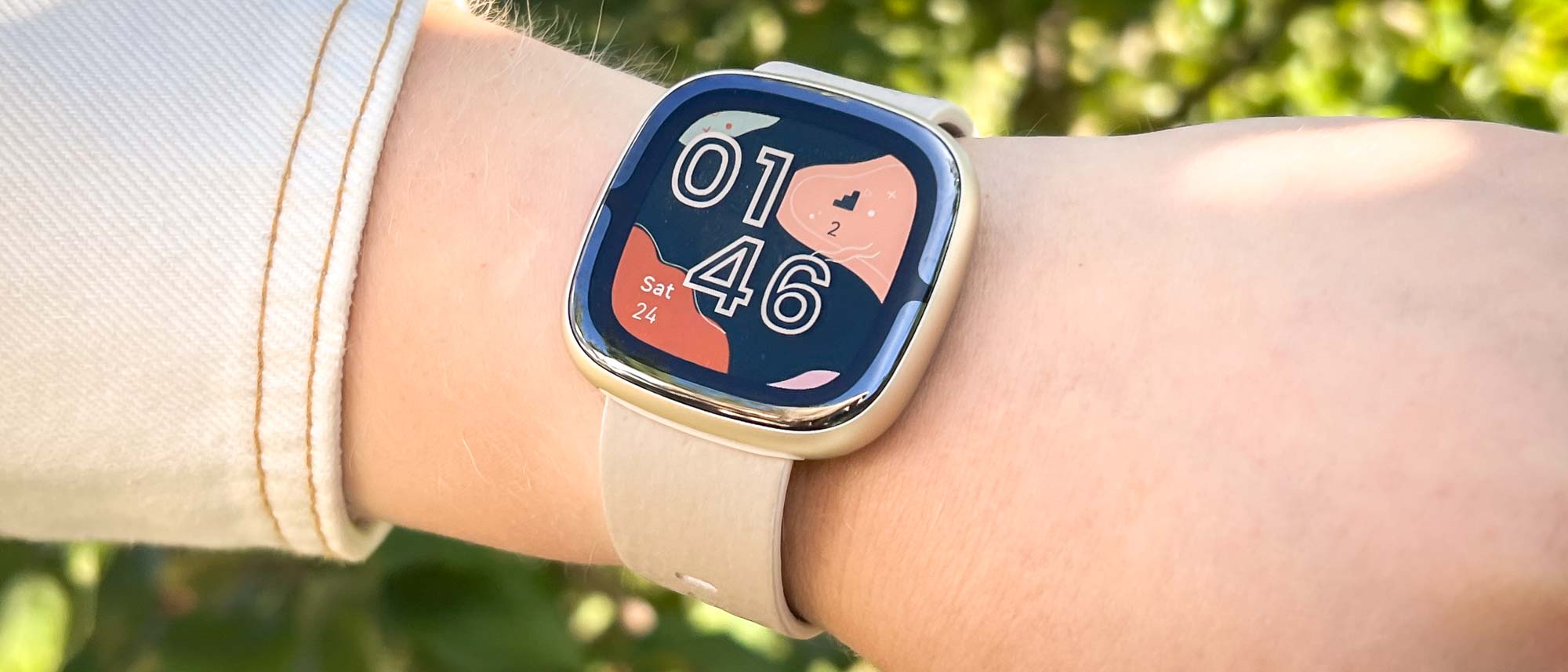Tom's Guide Verdict
The Fitbit Sense 2 is an advanced fitness-tracking smartwatch, with great battery life, and tools to help manage your physical health and mood. You don't get access to third-party apps, but you do get Google Maps and Wallet, and voice control with Alexa.
Pros
- +
Automatic stress monitoring tools
- +
Comfortable to wear for long periods
- +
Integrates with Fitbit Premium
- +
Works with Android and iPhone
Cons
- -
No third-party apps
- -
Lacks Google Assistant
- -
Comes with a USB-A charger
Why you can trust Tom's Guide
Price: $249.99 ($299.95 at launch)
Size: 38.1 x 11.3mm
Display: 1.58-inch AMOLED
Weight: 1.33 oz
Water resistance: Up to 50m
Battery life: 6 days
GPS: Yes
The Fitbit Sense 2 is the brand's first smartwatch since it was acquired by Google, and you can tell. It has a lot of what made the first-generation Sense great, but the search giant has stripped out several useful features and made them exclusive to the Google Pixel Watch range instead.
But the Sense 2 does have a few noteworthy upgrades. It has a fresher design, a new interface influenced by Google's Wear OS, and an EDA sensor for tracking your current stress levels, making for Fitbit's most holistic watch yet.
And its tightly integrated with Fitbit Premium for deeper data analysis and on-demand workouts, giving it a fitness-tracking edge over many of the best smartwatches around at the moment.
What elevates it from a good watch to one of the best Fitbits though is the new stress-tracking feature. The EDA sensor now monitors continuously throughout the day to help you keep track of your body's response to difficult situations.
Fitbit Sense 2 review: price and availability
The Fitbit Sense 2 launched in September 2022 and retailed for just shy of $300. In late 2023, the price dropped to $250, and you can now often find it on sale for around $200. At the new standard price, it's a lot cheaper than the first-gen Sense, which cost $330 at launch.
It's also just $50 more than the similarly-sized Fitbit Versa 4, but it has more health monitoring features, like the ECG and EDA sensors. However, the Google Pixel Watch 2 is the most full-featured in the range, combining Google apps and Fitbit tracking, and retails for considerably more, around $400.
For comparison, the Apple Watch Series 9 will set you back $399, and while it's considered the gold standard for smartwatches, it'll only work if you have an iPhone. Meanwhile, the Fitbit Sense 2 works with Android smartphones and iPhones, so it won't matter if you switch phones.
Fitbit Sense 2 review: design
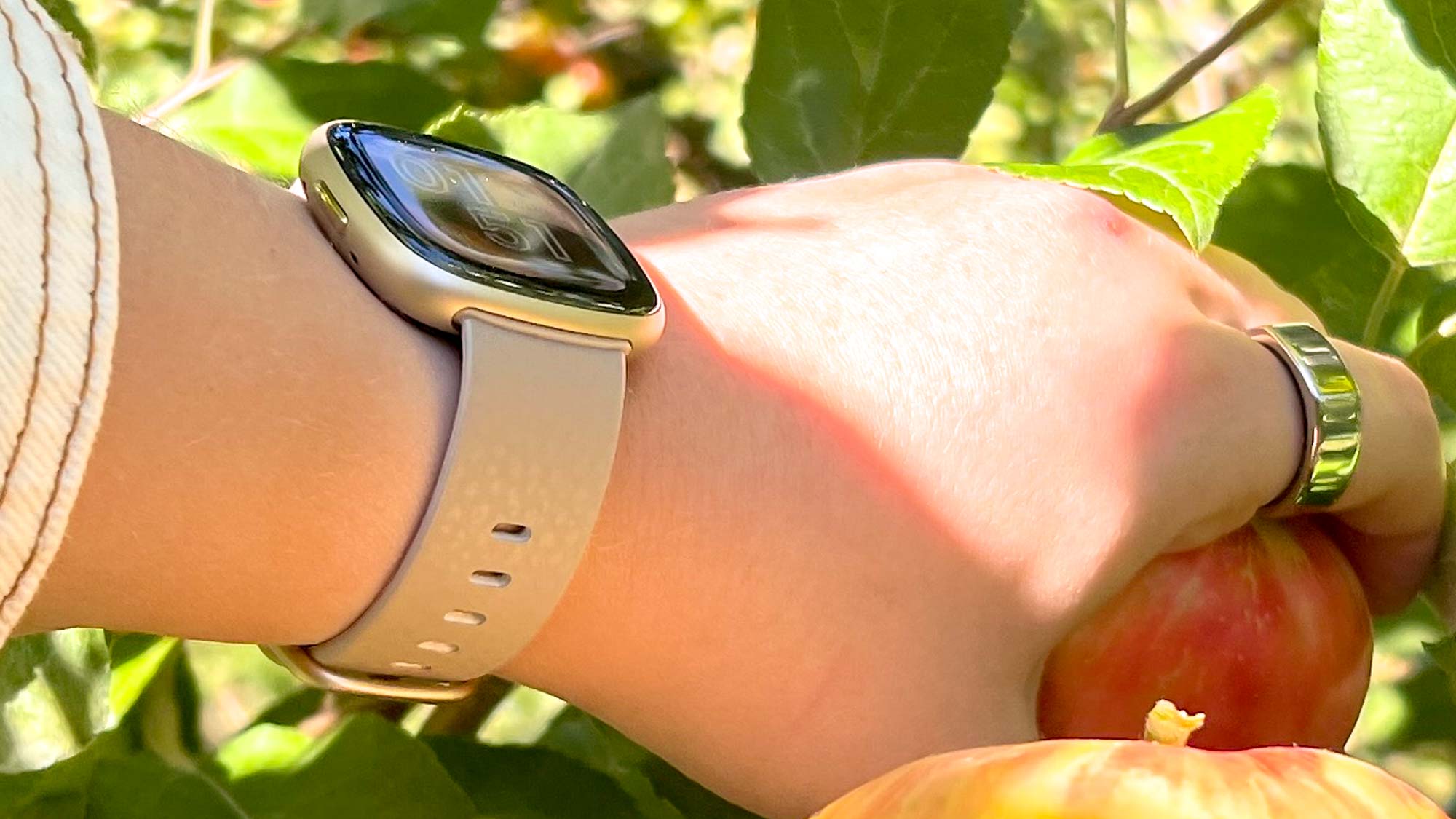
The Fitbit Sense 2 design looks familiar at a glance, but some changes have been made to benefit comfort. It's been engineered to establish a lower center of gravity and sit more flush to the wearer's wrist.
The Sense 2 is 10% thinner and 15% lighter than the previous generation, and I felt the difference. In my experience testing smartwatches, only the Apple Watch sits as comfortably as the Sense 2 does to my wrist.
Another important change in the Sense 2’s design is a switch from the indented touch area with haptic feedback to a physical button on the left side. While I got used to the discreet, capacitive control, the button is far more reliable. And it’s still rather subtle.
Otherwise, the similar squircle shape gives off a sporty feel, which I quite like. That said, it is compatible with a range of versatile straps. I stuck with the included sport bands for working out, but strapped on a soft vegan leather band for an apple picking excursion.
Fitbit Sense 2 review: health tracking
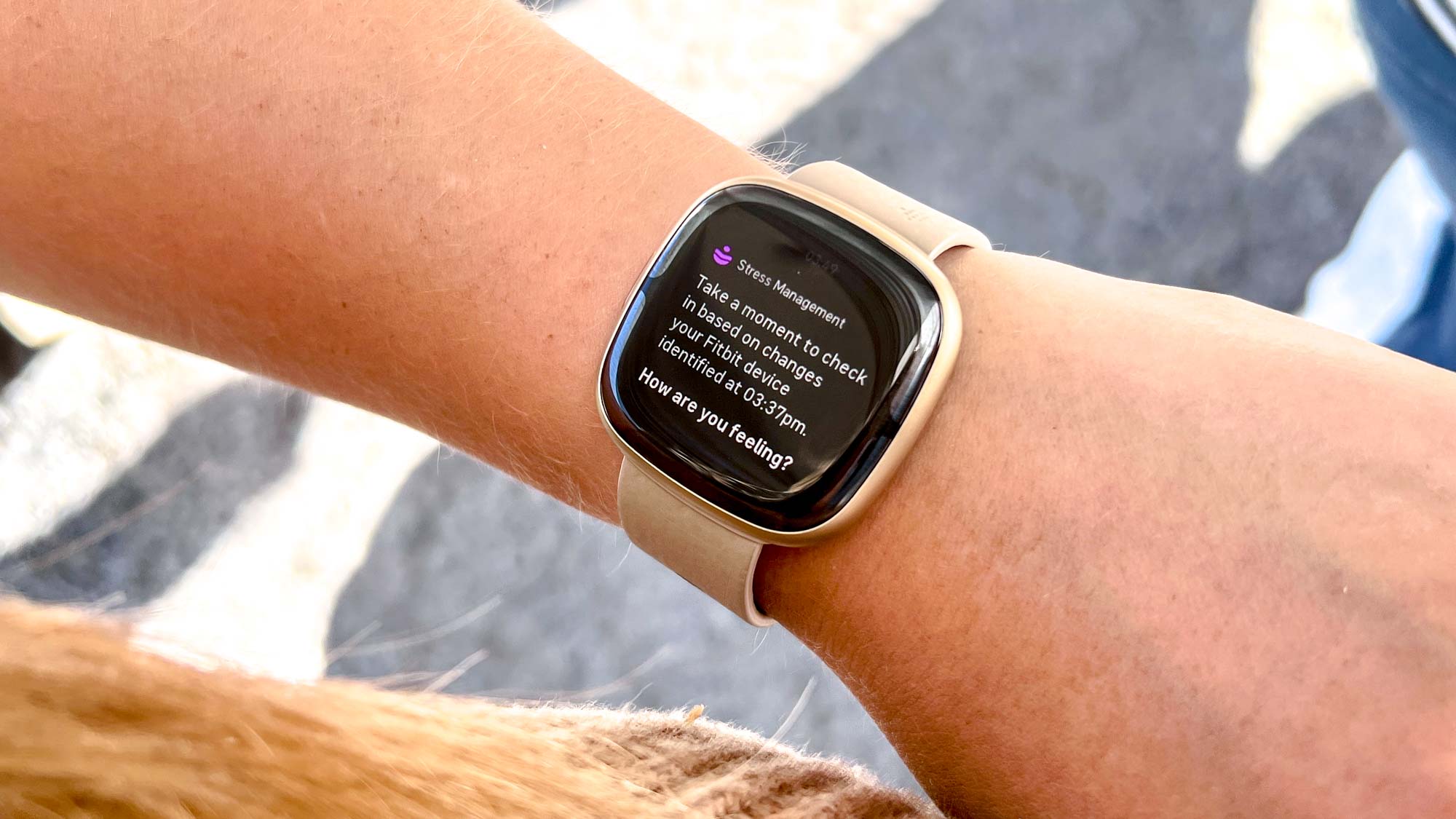
The first-gen Sense could help monitor your stress levels, but only if you manually started a reading. The Sense 2 adds in a continuous EDA sensor instead, so it'll automatically monitor your readings all day.
And while stress tracking based on skin sweat variability can seem like a bit of a gimmick, I think it successfully brings awareness to mental health — something that’s all too easy to ignore when you’re busy or preoccupied.
Sometimes, I'd get the stress-aware Body Response notifications when I felt perfectly happy, but it helped me take a moment to reflect on my mood. Then, when I did feel stressed or frustrated, the Sense 2 prompted me to meditate right on my wrist.
The Body Response alerts are based on your current heart rate, heart rate variability (HRV), and skin temperature. Fitbit was one of the first brands to integrate a body temperature sensor, but it's fairly common across most trackers these days.
However, the company has found an interesting way to use the data. Your tracker monitors your temperature as you sleep, and if your skin temperature varies a lot from your baseline overnight, it could indicate something going on with your health.
I compared my overnight temperature variabilities on the Fitbit Sense 2 to the Apple Watch Series 8 and Oura Ring Gen 3 and found the readings were within 0.1 degrees once I established my baseline.
The Sense 2 also has an ECG app to spot irregular heart rhythms and possible signs of atrial fibrillation. The Fitbit Charge 6 is the only other current-gen Fitbit device with both EDA and ECG, though it does generally function more like a traditional activity band than a smartwatch.
Fitbit Sense 2 review: fitness tracking
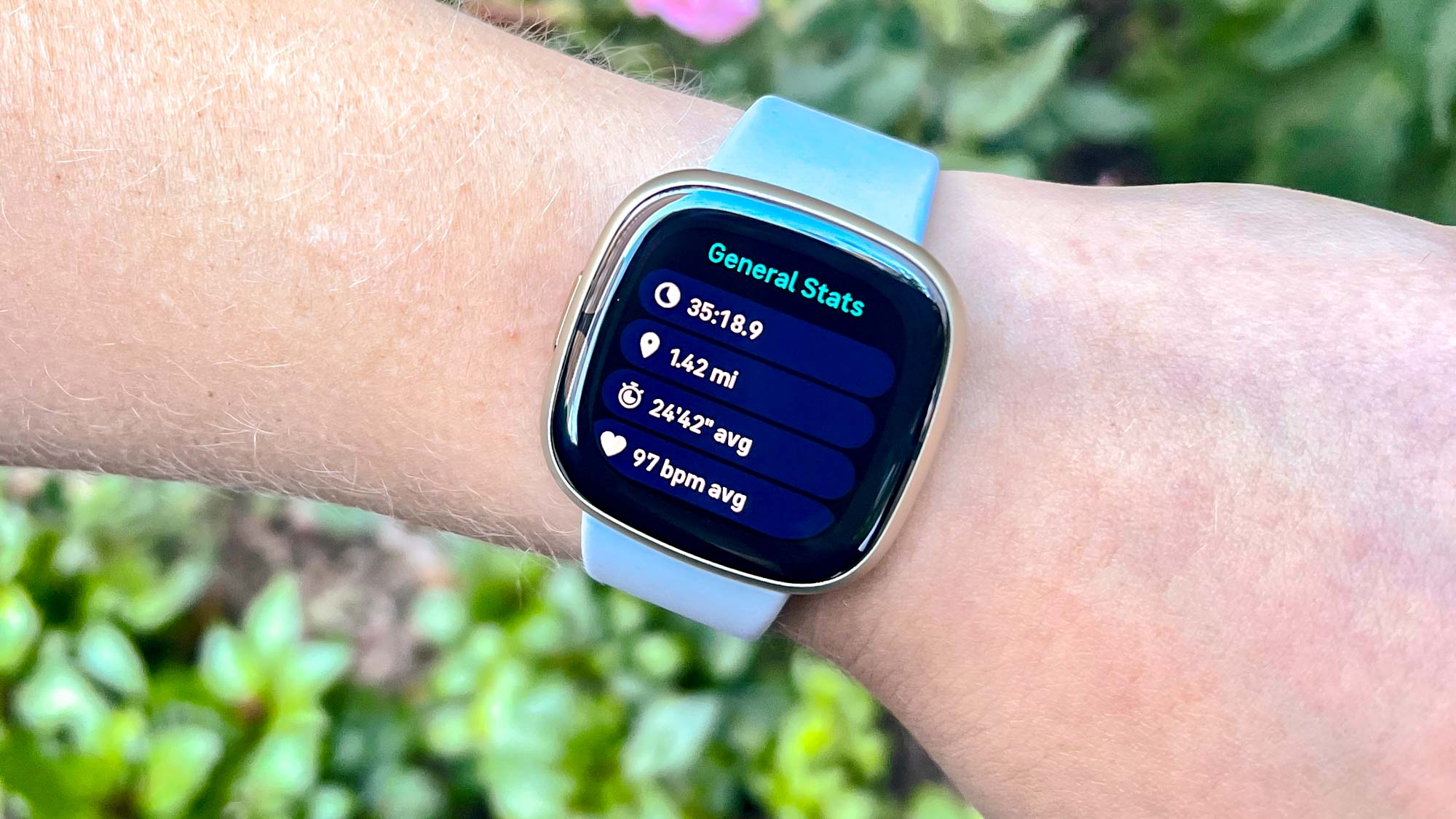
The Fitbit Sense 2 also does the basics like Fitbit's entry-level device, the Fitbit Inspire 3 — step counting, heart rate monitoring and activity tracking based on workout presets.
It supports over 40 workout types total, with a range of indoor and outdoor sports. Fitbit’s Active Zone Minutes feature encourages you to spend time in the fat burn, cardio or peak heart-rate zones while exercising.
Your mission is to earn the AHA’s and WHO’s recommended 150 Active Zone Minutes each week. I found it’s practical to reach the threshold with four workouts a week, but it’s important to know it’s just a recommendation.
Another kind of recommendation comes from Fitbit’s Daily Readiness Score, a feature available to Fitbit Premium members. Your Daily Readiness Score analyzes your sleep, activity and HRV to suggest how prepared you are for activity that day.
While some days I have a great Daily Readiness Score, meaning I’m primed to exercise and move, others when I didn’t sleep well or worked out hard the previous day my score encouraged me to prioritize recovery.
I know I mentioned sleep tracking as it relates to skin temperature variability, but there are other elements to Fitbit sleep tracking I happen to really enjoy. In Fitbit Premium, I can see my sleep score and sleep stages every night, tracking the score in a graph in the Fitbit app for a quick overview.
When you wear the Fitbit Sense 2 to bed consistently for a longer period of time, you develop a sleep profile as well as month-over-month sleep comparisons and insights such as Bedtime Consistency and Time to Sound Sleep.
Fitbit Sense 2 review: features
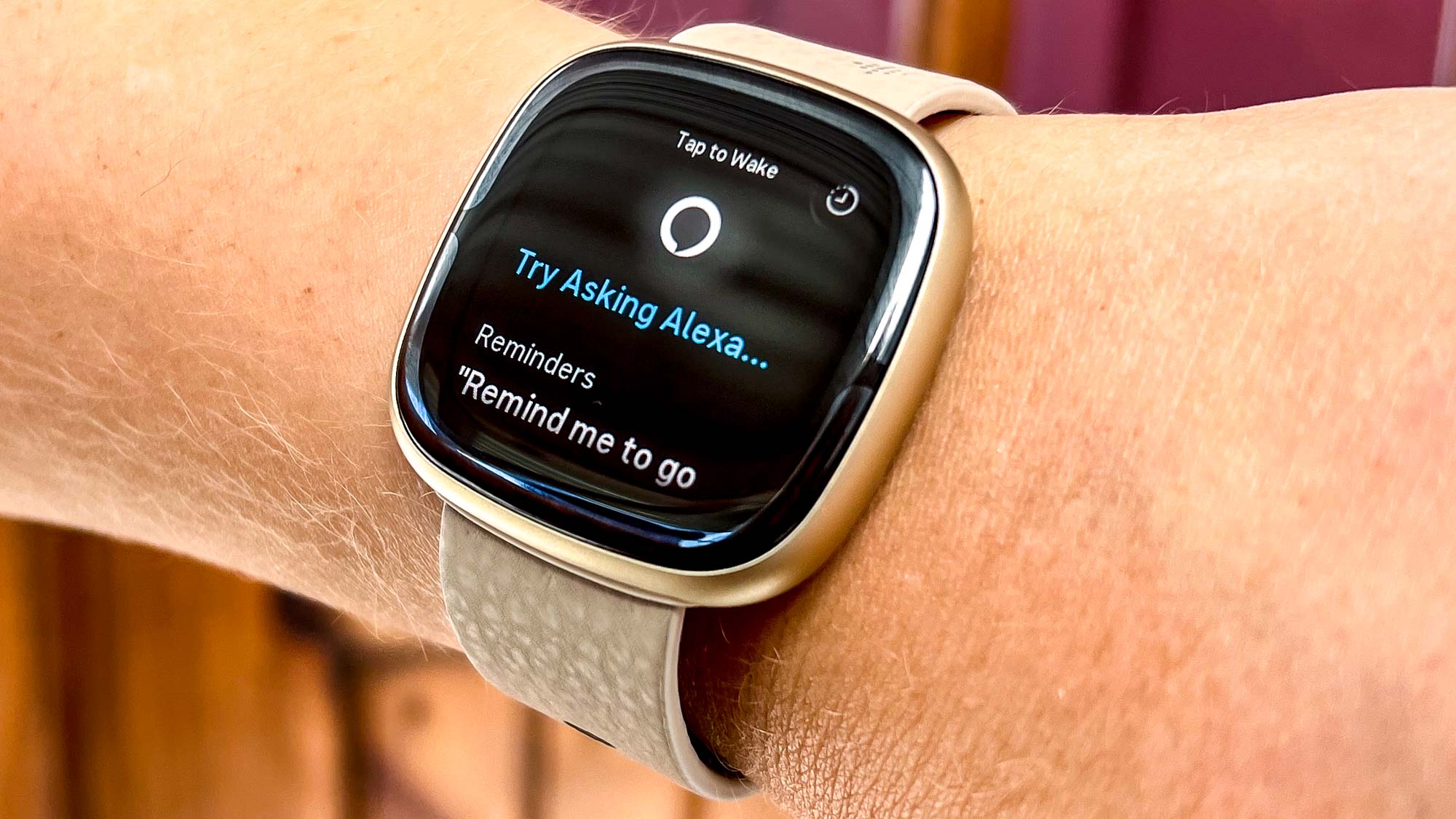
Although it doesn't run Google's smartwatch Wear OS software, there are some design influences on the Fitbit Sense 2. The first-gen watch had a series of app icons to browse, but the Sense 2 has a Wear OS-style tiled menu instead, making it easier to navigate the on-screen menus.
You can (and I did) download custom watch faces, you can't download third-party apps. This is a break with the past when you could install apps from Strava, MyFitnessPal, and Starbucks. But both the Sense 2 and Versa 4 can't.
At launch, the Fitbit Sense 2 didn't have a full range of Google apps, but in these came as part of a software update in early 2023. So you can now access Google Maps and Google Wallet (which mostly replaces Fitbit Pay for contactless payments).
Plus, there are smartwatch essentials, like mirrored smartphone notifications, weather reports, timers, and voice control via Alexa. I'm glad Fitbit devices still have Alexa, but it's an odd decision not to include Google Assistant as an option.
Fitbit Sense 2 review: battery life
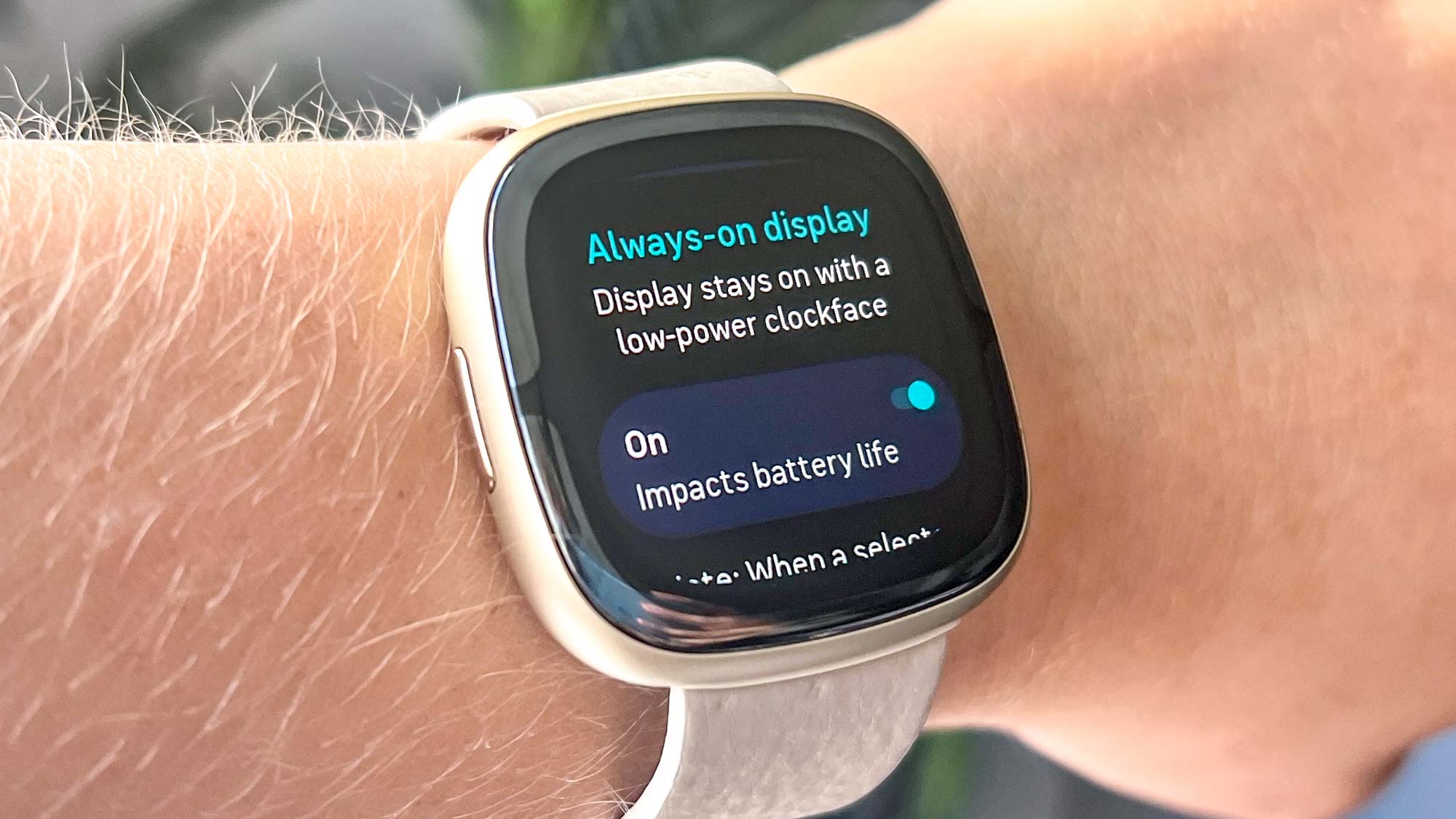
The Fitbit Sense 2 is rated for up to 6 full days of charge, which is one of the longest battery life estimates for a smartwatch that isn’t one of the best sports watches from Garmin. Of course, continuous GPS use will cut into the Sense 2’s battery life, but the biggest culprit of battery drain is the always-on display setting.
In my testing, the always-on display dropped my Fitbit’s battery expectancy nearly in half. In less than four days, my battery needed to be recharged. But this is to be expected, and was something I notably had to balance with the Samsung Galaxy Watch 5 when I tested it out.
Wanting to go longer without a charge, I turned off the always-on display and my battery is still at about 50% after three days. I feel confident enough to leave for a 2-day trip without bringing the proprietary USB-A charger. Not upgrading to USB-C definitely feels a little behind the times.
Should you buy the Fitbit Sense 2?
The Fitbit Sense 2 is a fantastic fitness and health-tracking smartwatch. It has some of the most useful and robust wellness sensors and insights of any tracker available right now, and is an ideal option if you want to keep tabs on your physical and mental health.
The proactive nature of cEDA could be a game-changer for mental health management as long as the wearer is willing to embrace body response notifications. What’s more, the Fitbit Sense has top-notch comfort and battery life.
But it’s still not enough to make me forget some of the quirks. Losing support for third-party apps with little explanation (yes, I asked) raises concern about how the Fitbit world I know might change at the onset of the Pixel Watch era.
I will say the Sense 2 reminded me that compatibility with both iOS and Android is a huge benefit for Fitbit that I hope doesn’t change. Not everyone wants their smartphone to dictate their choice in smartwatch.
Kate Kozuch is the managing editor of social and video at Tom’s Guide. She writes about smartwatches, TVs, audio devices, and some cooking appliances, too. Kate appears on Fox News to talk tech trends and runs the Tom's Guide TikTok account, which you should be following if you don't already. When she’s not filming tech videos, you can find her taking up a new sport, mastering the NYT Crossword or channeling her inner celebrity chef.
